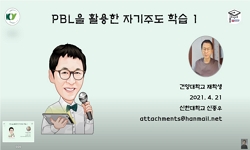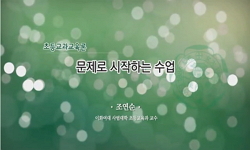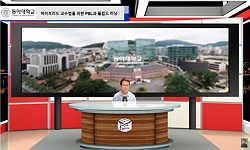The purpose of this study is to device the teaching-learning method and the evaluating method on ‘free inquiry’ which is newly introduced in 2007 revised curriculum. The teaching-learning models which apply ‘free inquiry’ are ‘group investig...
http://chineseinput.net/에서 pinyin(병음)방식으로 중국어를 변환할 수 있습니다.
변환된 중국어를 복사하여 사용하시면 됩니다.
- 中文 을 입력하시려면 zhongwen을 입력하시고 space를누르시면됩니다.
- 北京 을 입력하시려면 beijing을 입력하시고 space를 누르시면 됩니다.
https://www.riss.kr/link?id=A60099411
- 저자
- 발행기관
- 학술지명
- 권호사항
-
발행연도
2010
-
작성언어
Korean
- 주제어
-
KDC
375.2
-
등재정보
KCI등재
-
자료형태
학술저널
-
수록면
163-174(12쪽)
- 제공처
-
0
상세조회 -
0
다운로드
부가정보
다국어 초록 (Multilingual Abstract)
First, The person leading the lesson is not a teacher but learners. The focus of teaching-learning is not a unit but topic, problem or project on the science textbook. A teacher's role is not the deliverer of knowledge but the guide of
learning.
Second, the outcome of applying group investigation, PBL project investigation and IIM to ‘free inquiry’ is improvements of the problem-solving ability and the self-directed learning ability as well as building scientific attitude and social skills as educational effect in commonly.
Third, to apply ‘free inquiry’ efficiently, teachers should understand each subject very well, teach a class with a thorough and concrete plan, and try to evaluate objectively.
The purpose of this study is to device the teaching-learning method and the evaluating method on ‘free inquiry’ which is newly introduced in 2007 revised curriculum. The teaching-learning models which apply ‘free inquiry’ are ‘group investigation’, ‘PBL’, ‘project investigation’ and ‘IIM’. And the unit which apply ‘free inquiry’ on the fourth grade and the second semester in the elementary science. The results of this study are as follows:
First, The person leading the lesson is not a teacher but learners. The focus of teaching-learning is not a unit but topic, problem or project on the science textbook. A teacher's role is not the deliverer of knowledge but the guide of
learning.
Second, the outcome of applying group investigation, PBL project investigation and IIM to ‘free inquiry’ is improvements of the problem-solving ability and the self-directed learning ability as well as building scientific attitude and social skills as educational effect in commonly.
Third, to apply ‘free inquiry’ efficiently, teachers should understand each subject very well, teach a class with a thorough and concrete plan, and try to evaluate objectively.
목차 (Table of Contents)
- ABSTRACT
- Ⅰ. 서론
- Ⅱ. 연구방법
- 1. 연구절차
- 2. 연구방법
- ABSTRACT
- Ⅰ. 서론
- Ⅱ. 연구방법
- 1. 연구절차
- 2. 연구방법
- 3. 연구결과물 검증
- Ⅲ. 연구 결과 및 논의
- 1. 자유탐구 학습방법 및 평가방법
- 3. Project Inquiry Method
- 4. IIM(Independent Investigation Method)
- 2. 논의
- Ⅳ. 결론 및 제언
- 참고문헌
동일학술지(권/호) 다른 논문
-
- 대한지구과학교육학회
- 홍순원
- 2010
- KCI등재
-
학습정리 단계에서 만화자료를 활용한 수업이 과학적 태도 및 학업성취도에 미치는 영향
- 대한지구과학교육학회
- 이형철
- 2010
- KCI등재
-
- 대한지구과학교육학회
- 김상달
- 2010
- KCI등재
-
사이버네틱스와 급진적 구성주의에 입각한 학습모형 구안을 위한 예비 작업
- 대한지구과학교육학회
- 유병길
- 2010
- KCI등재






 ScienceON
ScienceON eArticle
eArticle






